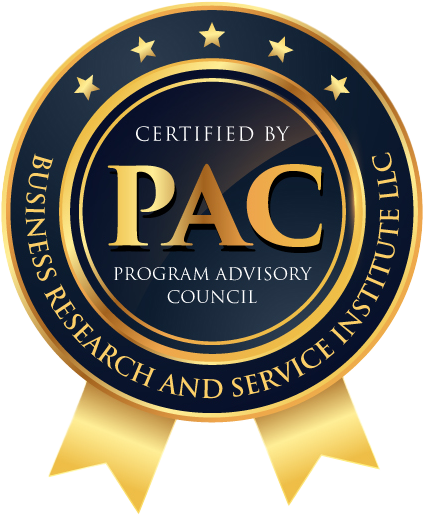In today’s interconnected and rapidly evolving business landscape, collaboration in supply chain management is crucial for achieving efficiency, reducing costs, and enhancing customer satisfaction. Effective supply chain collaboration fosters better communication, coordination, and synergy among stakeholders, leading to improved performance across the board.
This article explores the levels of supply chain collaboration, focusing on vertical collaboration in the supply chain, horizontal collaboration in the supply chain, internal collaboration, and external collaboration—detailing their importance, benefits, and real-world examples.
1. Vertical Collaboration in Supply Chain
Vertical collaboration in the supply chain refers to strategic partnerships between entities operating at different levels, such as manufacturers, suppliers, distributors, and retailers. This collaboration aims to create a more streamlined and integrated supply chain by fostering transparency, improving coordination, and aligning business objectives.
It enhances operational efficiency by enabling better communication, demand forecasting, and resource optimization, leading to reduced costs and faster response times. Additionally, vertical collaboration promotes innovation by facilitating joint product development, ensuring that market demands are met more effectively.
In order to improve agility and resilience in a competitive environment, businesses may further increase vertical collaboration by utilizing cutting-edge technology like cloud-based supply chain management systems and AI-driven analytics.
Key Benefits of Vertical Collaboration:
- Improved Demand Forecasting: Real-time data sharing helps predict market trends and avoid stock imbalances.
- Enhanced Supply Chain Efficiency: Coordination between suppliers and retailers reduces lead times and optimizes logistics.
- Cost Reduction: Joint decision-making in procurement and production helps cut excess costs.
- Innovation & Product Development: Close collaboration fosters innovation, enabling faster adaptation to consumer needs.
Real-World Example:
- Walmart & Procter & Gamble (P&G): Through an integrated data-sharing system, P&G receives real-time sales data from Walmart, allowing for precise inventory management and faster replenishment cycles, leading to improved efficiency and reduced costs.
Key Aspects of Vertical Collaboration:
- Information Sharing: Enhanced visibility of demand patterns and inventory levels helps reduce uncertainty and inefficiencies.
- Joint Decision-Making: Stakeholders work together on procurement strategies, production schedules, and logistics planning.
- Process Integration: Streamlining production, warehousing, and transportation ensures cost efficiency and customer satisfaction.
Examples of Supply Chain Collaboration (Vertical):
- Walmart & Procter & Gamble (P&G): Real-time data sharing allows P&G to manage Walmart’s inventory efficiently, reducing stockouts and improving supply chain responsiveness.
- Toyota Production System (TPS): Toyota collaborates with suppliers to achieve just-in-time (JIT) manufacturing, minimizing waste and optimizing production.
2. Horizontal Collaboration in Supply Chain
Horizontal collaboration in the supply chain occurs when businesses operating at the same level. Such as competitors or similar organizations, work together to improve efficiency, reduce costs, and gain strategic advantages. This form of collaboration enables companies to share resources, optimize transportation and logistics, and co-develop solutions that benefit all parties involved.
By pooling expertise and capabilities, businesses can achieve economies of scale, reduce environmental impact, and increase market reach without directly competing in certain operational areas. Additionally, horizontal collaboration can lead to cost-sharing in research and development, enhancing innovation and product development.
Key Aspects of Horizontal Collaboration:
- Shared Resources: Companies pool logistics, warehousing, or production facilities to cut costs.
- Joint Procurement & Distribution: Bulk purchasing and shared distribution networks reduce expenses.
- Sustainability Initiatives: Collaborating on green supply chain initiatives, such as reducing carbon emissions in transportation.
Examples of Supply Chain Collaboration (Horizontal):
- DHL & UPS: These logistics giants collaborate in certain regions to optimize freight transportation and reduce operational costs.
- Airline Alliances (e.g., Star Alliance, OneWorld): Airlines share routes, lounges, and booking platforms to enhance service efficiency and reduce costs.
3. Internal Collaboration
Internal collaboration involves seamless communication and coordination among various departments within an organization to enhance supply chain efficiency. It ensures that procurement, production, inventory management, logistics, and sales teams work cohesively, minimizing bottlenecks and delays.
By leveraging integrated technologies such as Enterprise Resource Planning (ERP) and Supply Chain Management (SCM) systems, organizations can achieve real-time data sharing, improving decision-making and responsiveness.
A well-structured internal collaboration model fosters agility, streamlines workflow, and aligns business objectives with supply chain performance goals, leading to cost savings and improved service delivery.
Key Aspects of Internal Collaboration:
- Cross-Departmental Coordination: Procurement, production, inventory management, and logistics teams align their activities.
- Technology Integration: Implementing Enterprise Resource Planning (ERP) and Supply Chain Management (SCM) systems enhances real-time data sharing.
- Performance Metrics Alignment: Synchronizing KPIs across departments ensures business objectives are met efficiently.
Examples of Internal Collaboration:
- Amazon: The company’s fulfillment centers integrate data across departments, ensuring efficient order processing and delivery.
- Apple’s Supply Chain: Apple aligns product design, manufacturing, and logistics teams to streamline operations and product launches.
4. External Collaboration
External collaboration in supply chain management refers to strategic partnerships between companies and external entities such as third-party logistics providers (3PLs), suppliers, distributors, and customers.
This collaboration is essential for improving supply chain performance, reducing operational costs, enhancing customer satisfaction, and increasing agility in response to market changes. Effective external collaboration requires transparent communication, data sharing, and alignment of business goals between all stakeholders.
Key Aspects of External Collaboration:
- Supplier Relationship Management (SRM): Establishing long-term strategic relationships with suppliers.
- Joint Product Development: Companies collaborate with suppliers and customers to co-create innovative products.
- Risk Sharing: Shared responsibility in handling disruptions, inventory risks, and supply chain uncertainties.
Examples of Supply Chain Collaboration (External):
- Zara: Works closely with suppliers to produce fast fashion efficiently.
- Ford & IBM: Collaborated to implement blockchain technology for ethical sourcing of raw materials.
Advanced Supply Chain Collaboration Practices
As supply chains become increasingly complex, businesses are adopting advanced collaboration practices. These approaches leverage technology, data sharing, and strategic partnerships to optimize supply chain performance. Below are three key advanced collaboration strategies:
1. Collaborative Planning, Forecasting, and Replenishment (CPFR):
A strategic framework where businesses share demand forecasts, sales data, and inventory information to optimize replenishment. This proactive approach ensures that supply chain partners can anticipate market trends, reducing stockouts and overstock situations. CPFR fosters trust and stronger relationships between suppliers and retailers, ultimately improving the entire supply chain’s responsiveness and efficiency.
2. Vendor-Managed Inventory (VMI):
A supply chain practice where the supplier takes full responsibility for managing stock levels at the customer’s location. By using real-time data and analytics, suppliers can ensure optimal inventory levels, reducing the burden on retailers and improving service levels. This model enhances supply chain efficiency, cuts carrying costs, and minimizes the risk of stockouts.
3. Collaborative Transportation Management (CTM):
Collaborative Transportation Management (CTM) is a logistics strategy in which supply chain partners, including manufacturers, suppliers, distributors, and carriers, work together to optimize transportation operations.
This approach focuses on consolidating shipments, improving route planning, and leveraging shared freight capacity to enhance efficiency and reduce costs. By integrating real-time data analytics and digital platforms, CTM allows companies to minimize empty miles, lower carbon emissions, and improve overall delivery reliability.
Benefits of Supply Chain Collaboration
- Enhanced operational efficiency and reduced costs
- Improved demand forecasting and inventory management
- Shorter lead times and increased customer satisfaction
- Greater supply chain resilience and risk mitigation
- Sustainability improvements through resource sharing and waste reduction
Challenges & Solutions in Supply Chain Collaboration
Common Challenges:
- Data Privacy & Security Concerns: Companies may hesitate to share sensitive information.
- Technological Integration Issues: Legacy systems may not support seamless collaboration.
- Cultural & Strategic Misalignment: Differing organizational goals and work cultures may hinder collaboration.
Solutions:
- Blockchain & AI Implementation: Ensures secure, transparent, and automated data sharing.
- Cloud-Based SCM Systems: Enable real-time collaboration and data synchronization.
- Aligning Incentives: Establishing mutual benefits and KPIs across supply chain partners.
Future Trends in Supply Chain Collaboration
- AI & Machine Learning: Predictive analytics for improved demand planning.
- Blockchain Technology: Enhancing transparency and security in supply chain transactions.
- Circular Supply Chains: Focus on sustainability and recycling in manufacturing.
- IoT & Real-Time Tracking: Enabling better visibility and efficiency in logistics.
Conclusion
Effective supply chain vertical collaboration and horizontal collaboration supply chain strategies are essential for modern businesses to stay competitive. Whether through internal collaboration or external collaboration, companies that integrate advanced supply chain collaboration examples and best practices can achieve efficiency, cost savings, and customer satisfaction.
By leveraging technology, fostering strong partnerships, and adopting sustainable practices, organizations can create a resilient, agile, and high-performing supply chain that adapts to evolving market demands.
FAQs
What is supply chain collaboration?
Supply chain collaboration refers to the process where different stakeholders in the supply chain—such as suppliers, manufacturers, distributors, and retailers—work together to enhance efficiency, reduce costs, and improve service levels. It involves sharing data, coordinating logistics, and aligning business goals for mutual benefits.
What are the main types of supply chain collaboration?
The four primary types of supply chain collaboration are:
Vertical Collaboration – Cooperation between different levels of the supply chain (e.g., suppliers, manufacturers, retailers).
Horizontal Collaboration – Partnerships between businesses at the same supply chain level (e.g., competitors sharing logistics).
Internal Collaboration – Coordination between different departments within a company to streamline supply chain operations.
External Collaboration – Cooperation between companies and third parties, such as logistics providers, suppliers, and customers.
What is vertical collaboration in the supply chain?
Vertical collaboration involves businesses working together across different levels of the supply chain to improve efficiency and customer service. Examples include manufacturers sharing real-time demand data with suppliers to optimize production and reduce lead times.
How does horizontal collaboration benefit supply chain operations?
Horizontal collaboration allows companies operating at the same supply chain level to share resources, reduce costs, and improve efficiency. For example, logistics companies may share transportation networks to optimize delivery routes and reduce carbon emissions.
What is internal collaboration in supply chain management?
Internal collaboration ensures that various departments within a company—such as procurement, production, logistics, and sales—work together seamlessly. By integrating technologies like ERP (Enterprise Resource Planning) and SCM (Supply Chain Management) systems, organizations can improve coordination and decision-making.
What is external collaboration in supply chains?
External collaboration involves companies partnering with third-party logistics providers, suppliers, distributors, and even customers to enhance supply chain performance. This collaboration improves inventory management, demand forecasting, and service delivery.
What are the benefits of supply chain collaboration?
Some key benefits of supply chain collaboration include:
1. Improved demand forecasting and inventory management
2. Reduced operational costs and increased efficiency
3. Faster response times and better customer service
4. Enhanced innovation and product development
5. Greater supply chain resilience and risk mitigation
How does Collaborative Planning, Forecasting, and Replenishment (CPFR) improve supply chain collaboration?
CPFR is a strategic approach where businesses share demand forecasts, sales data, and inventory levels to enhance replenishment planning. It helps suppliers and retailers minimize stockouts, reduce overstock, and improve overall supply chain efficiency.
What is Vendor-Managed Inventory (VMI) in supply chain collaboration?
VMI is a practice where suppliers take responsibility for managing stock levels at the retailer’s location. By leveraging real-time data, suppliers ensure optimal inventory levels, reducing excess stock and improving service levels.
How does Collaborative Transportation Management (CTM) enhance logistics efficiency?
CTM is a logistics strategy where multiple companies collaborate to optimize transportation routes, consolidate shipments, and share freight capacity. This reduces costs, improves delivery reliability, and lowers environmental impact.
What challenges do companies face in supply chain collaboration?
Common challenges include:
Lack of trust and reluctance to share sensitive data
Misaligned business objectives among partners
Integration difficulties with different IT systems
Supply chain disruptions and unpredictable market conditions
How can companies improve supply chain collaboration?
To enhance collaboration, companies should:
1. Invest in advanced digital technologies like AI, blockchain, and cloud-based supply chain management systems.
2. Establish clear communication channels and data-sharing agreements.
3. Develop strong partnerships with suppliers, distributors, and logistics providers.
4. Align goals and performance metrics across the supply chain.

We have been offering extensive and well-planned pieces of training in the field of economics, supply chain, and operations management. Our core purpose is to help industry professionals and businesses to succeed in an ever-evolving competency in the jobs market. Our cutting-edge training methods and up-to-date knowledge aligned with the latest industry trends and demands put our candidates in the lead amongst other job seekers and competitors in the market.
- BRASI Editorial Team#molongui-disabled-linkSeptember 3, 2024
- BRASI Editorial Team#molongui-disabled-linkOctober 8, 2024
- BRASI Editorial Team#molongui-disabled-linkNovember 19, 2024








